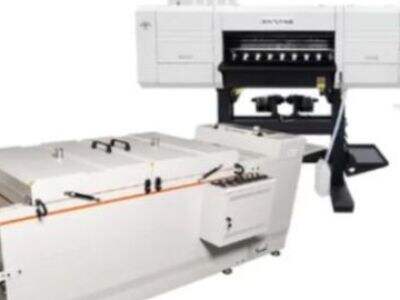Wat de algemene fouten betreft die je moet vermijden bij het gebruik van een DTF-drukker om shirts te maken, hou ik van het idee van DTF-printen omdat het je in staat stelt kleurrijke ontwerpen op stof aan te brengen, maar natuurlijk is het belangrijk om het goed te doen om het beste resultaat te verkrijgen. Hieronder staan vijf veelvoorkomende fouten om te vermijden bij het gebruik van een DTF-drukker voor je t-shirts:
Sla het voorbereidingswerk niet over.
Het voorbereiden van je shirt en ontwerp met een DTF-drukker speelt een cruciale rol. Je shirt moet schoon zijn voordat je erop print. Een goede gewoonte is om je shirt te wassen voordat je erop print. Dit verwijdert stof, vuil en andere kleine rommel die de print kunnen belemmeren. Printen op een shirt dat er netjes en schoon uitziet, zorgt er ook voor dat het ontwerp beter vastzit en er visueel aantrekkelijker uit ziet.
Daarna controleer je je ontwerp op een punt waar het goed zichtbaar en leesbaar moet zijn. Je ontwerp moet geweldig zijn en minimaal 300 DPI (dots per inch) hebben. Dit betekent dat je afbeelding scherp is en nooit uit beeld raakt. Een dergelijke resolutie voorkomt dat er bij het afdrukken van het ontwerp pixelatie of vervorming optreedt. Het zal er fantastisch uitzien als je deze stappen toepast op je eindproduct voordat je het afdrukt.
Controleer altijd je instellingen
Controleer je printerinstellingen voordat je afdrukt. Dit vereist dat je ervoor zorgt dat je printeropties correct zijn ingesteld voor je shirt en afbeelding. Er zijn andere dingen die je moet controleren, zoals welk soort inkt je gebruikt, welk soort papier, en wat was je printmodus? Al deze factoren kunnen ernstig invloed hebben op hoe je ontwerp eruit komt te zien.
Als je een warmdrukmachine gebruikt om je ontwerp aan te brengen, moet je ervoor zorgen dat de instellingen hiervan ook juist zijn. Dit omvat temperatuur, druk en tijd, allemaal goed ingesteld voor je shirt en ontwerp. Deze instellingen zijn behoorlijk cruciaal omdat ze bepalen hoe het ontwerp overgaat op het shirt en of het goed blijft plakken. Dus, als het verkeerd is ingesteld, kan het ontwerp barsten of afbladderen, wat het laatste is wat je wilt.
Overlappende ontwerpen vermijden
Als je van plan bent om de ontwerpen op hetzelfde shirt af te drukken, is het absoluut essentieel dat je ontwerpen niet overlappen. Dit wordt gedaan om problemen bij het printen te voorkomen, waarbij sommige ontwerpen kunnen overlappen en het risico lopen om uit te lopen, met daarnaast een slechtere printkwaliteit. Het ontwerp ziet er niet goed of professioneel uit.
Om over elkaar heen lopende ontwerpen te voorkomen, moet je ervoor zorgen dat je elk ontwerp op het shirt apart houdt. Je kunt dit bereiken door de middelste lijn van je shirt te meten en te markeren. Dit helpt je om elk ontwerp op de juiste plek te plaatsen en te controleren of ze elkaar complementeren zonder overlaping.
Gebruik Goede Transferpapier
Het type transferpapier dat je gebruikt is belangrijk voor de kwaliteit van je print. Laagwaardig transferpapier kan problemen veroorzaken met inktabsorptie. Dit kan resulteren in een ontwerp dat afbladdert of barst na het printen. Dat is niet wat je wilt voor je shirt.
Gebruik goedkwalitatief transferpapier bij het kiezen van het materiaal. Xin Flying heeft hoogwaardig transferpapier dat perfecte prints garandeert. Lees vervolgens de instructies die bij het transferpapier horen. Dit zal ervoor zorgen dat je ontwerpen de beste resultaten opleveren.
Testprint op monstersoort
Het is een wijze beslissing om eerst een testmonster af te drukken op een stukje voordat je je ontwerp op het echte shirt afdrukt. Het moet gelijk zijn aan de stof van het shirt dat je gaat gebruiken. Op deze manier kun je zien hoe het eruit zal zien en hoe het zich zal aanvoelen op de stof. Je wordt getest op de gegevens die tot oktober 2023 zijn vastgelegd.

 EN
EN
 AR
AR
 NL
NL
 FR
FR
 DE
DE
 EL
EL
 HI
HI
 IT
IT
 JA
JA
 KO
KO
 PL
PL
 PT
PT
 RU
RU
 ES
ES
 TL
TL
 IW
IW
 ID
ID
 LV
LV
 LT
LT
 SR
SR
 SK
SK
 SL
SL
 UK
UK
 VI
VI
 SQ
SQ
 ET
ET
 GL
GL
 HU
HU
 MT
MT
 TH
TH
 TR
TR
 FA
FA
 AF
AF
 BE
BE
 KA
KA


